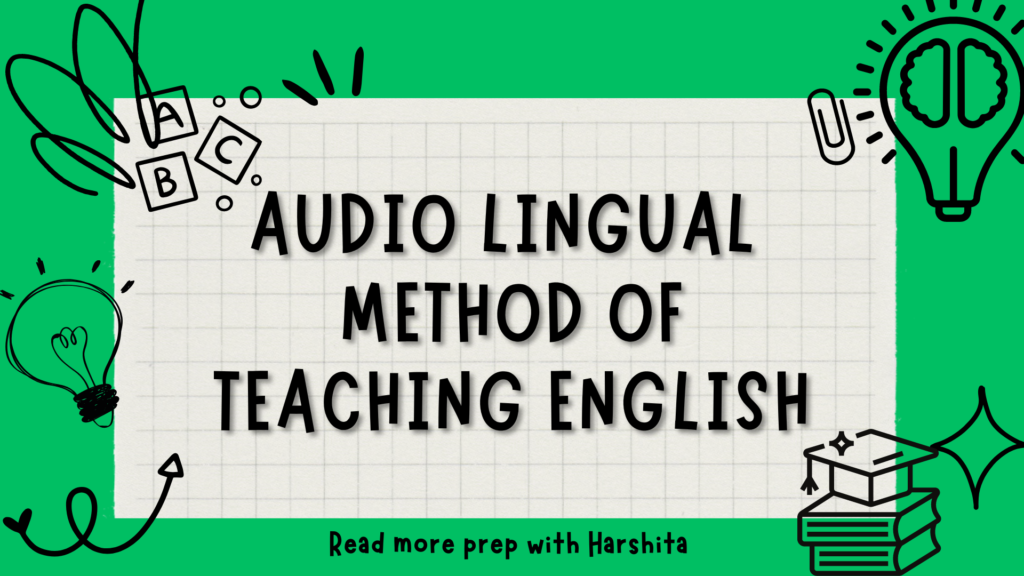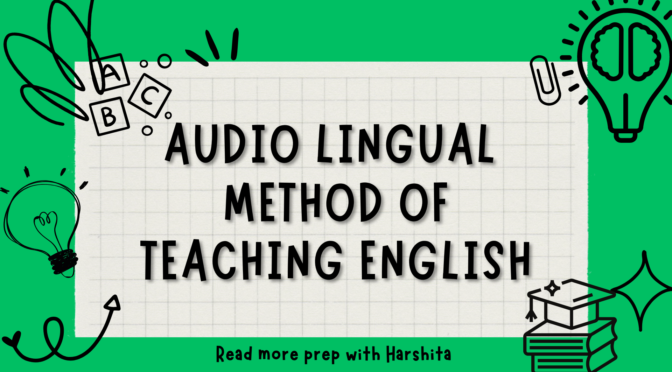The Audio-Lingual Method of teaching is an approach to teaching English that emerged in the 1950s and gained popularity in the 1960s. It emphasizes the importance of oral skills and aims to develop students’ listening and speaking abilities through repetitive drills and pattern practice.
Here are some key features and techniques of the Audio-Lingual Method:
- Oral Skills Focus: The Audio-Lingual Method prioritizes the development of listening and speaking skills. It seeks to train students to understand and produce English sounds, intonation patterns, and sentence structures accurately and fluently.
- Listening and Imitation: Students engage in extensive listening activities to familiarize themselves with English sounds, words, and phrases. They then imitate the audio recordings or the teacher’s pronunciation to develop accurate pronunciation, rhythm, and intonation.
- Pattern Practice: The method uses pattern drills to reinforce grammatical structures and sentence patterns. Students practice repetitive exercises where they fill in missing words or complete sentences using the target language patterns. This repetition is believed to help internalize language structures and promote automaticity.
- Controlled Language Use: Initially, students are provided with highly structured and controlled language exercises. They learn specific dialogues and phrases, focusing on accuracy and mastery of the target language forms. This approach aims to build a solid foundation before moving on to more open-ended and creative language use.
- Minimal Use of the Native Language: The Audio-Lingual Method advocates for minimal use of the students’ native language in the classroom. The teacher and students predominantly use English to create an immersive environment that encourages constant exposure to the target language.
- Error Correction: Errors are immediately corrected by the teacher, and students are expected to repeat the corrected form or sentence. The focus is on accuracy and the elimination of errors through immediate feedback and repetition.
- Audio Recordings: Audio recordings, such as dialogues, narratives, and drills, play a significant role in the Audio-Lingual Method. They provide models for pronunciation, intonation, and language patterns. Students listen to these recordings repeatedly to internalize the language and practice accurate repetition.
- Limited Use of Reading and Writing: In the initial stages, reading and writing skills are secondary to listening and speaking. However, as students progress, reading and writing activities may be introduced to reinforce vocabulary, sentence structures, and reading comprehension skills.
- Language Contextualization: The method aims to situate language use within real-life contexts. Dialogues and situational role-plays are employed to simulate practical situations, such as ordering food in a restaurant or making travel arrangements. This contextualization aims to facilitate the transfer of language skills to real-life communication.
The Audio-Lingual Method is rooted in behaviorist theories of learning, emphasizing repetition, habit formation, and reinforcement. While it places significant emphasis on oral skills, it is worth noting that it may have limitations in developing higher-order thinking skills and creative language use.
Contemporary language teaching approaches often incorporate elements of the Audio-Lingual Method alongside communicative and task-based approaches to provide a more comprehensive and balanced language learning experience.
Also Read: Direct Method of Teaching

Also Visit: Prep with Harshita

